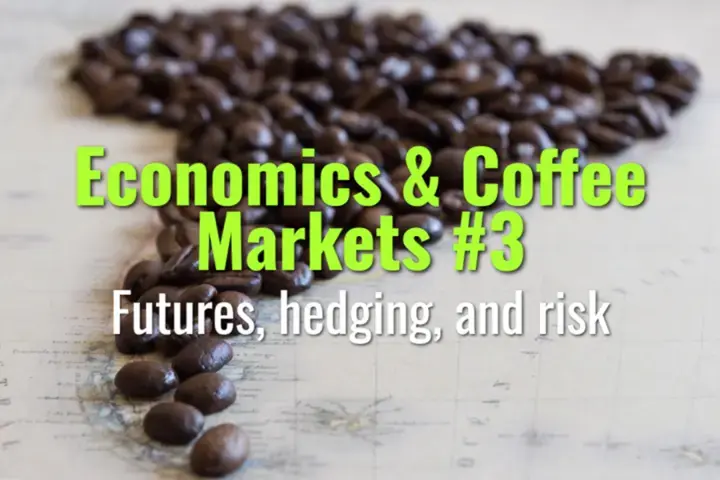Futures, hedging, and risk
How futures contracts, hedging strategies, and risk management function in the global coffee market, protecting both buyers and sellers from price volatility.
- Coffee Basics Nerds
- 2 min read
Article 3 of 12 in Economics & Coffee Markets/

Why Risk Management Matters
- The coffee market is highly volatile, influenced by climate shocks, currency shifts, and global demand.
- Without hedging, both producers and roasters face unpredictable profit margins.
Futures Contracts
- Definition: Agreements to buy/sell a standard coffee lot (37,500 lbs) at a future date at today’s agreed price.
- Traded on the Intercontinental Exchange (ICE).
- Provide price transparency and liquidity.
Hedging Basics
- Producers/Exporters: Sell futures contracts to lock in prices for upcoming harvests → protects against falling market prices.
- Importers/Roasters: Buy futures contracts to secure supply at stable costs → protects against rising market prices.
- Speculators: Trade futures for profit, adding liquidity but increasing volatility.
Types of Risk
- Price Risk: Fluctuations in NYC ‘C’ price.
- Currency Risk: Exchange rate volatility (e.g., Brazilian real vs US dollar).
- Counterparty Risk: Failure of contract partners to deliver.
- Operational Risk: Quality loss or logistical delays.
Example of Hedging
- Farmer expects to produce 1,000 bags.
- Current C market: 180 c/lb.
- Farmer sells futures at 180 to guarantee revenue.
- If market drops to 150, farmer is protected.
- If market rises to 200, farmer misses extra gains—but secured stability.
Alternative Tools
- Options Contracts: Right (but not obligation) to buy/sell at a set price → provides flexibility.
- Forward Contracts: Private agreements outside the exchange, tailored but less liquid.
Summary
Futures and hedging protect stakeholders from market volatility. By locking in prices or using options, producers and roasters trade potential windfall gains for stability and predictability, ensuring long-term sustainability in the coffee value chain.